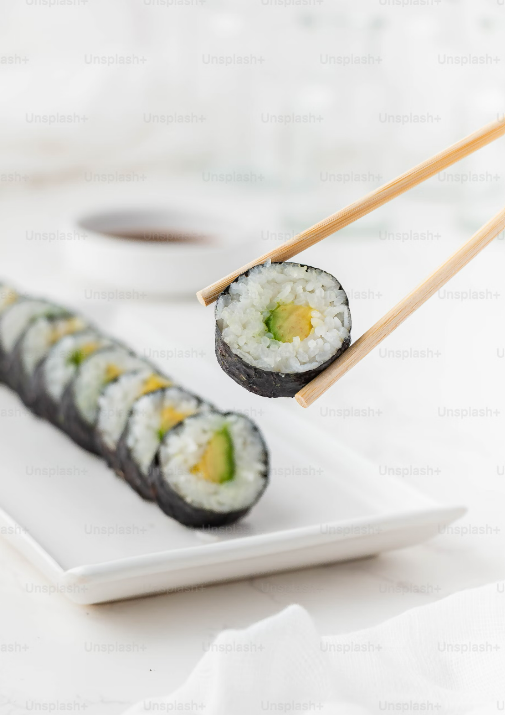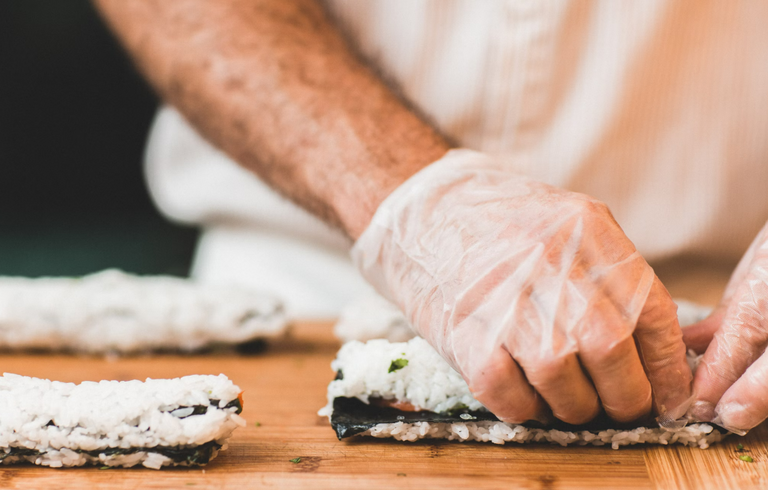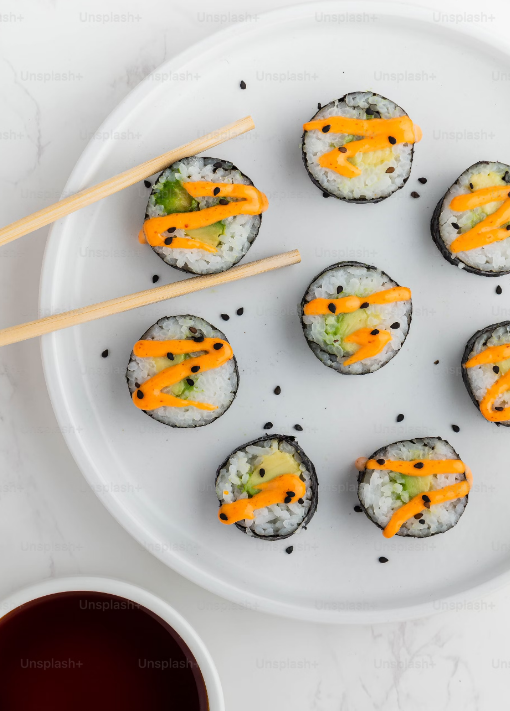Sushi, the epitome of Japanese cuisine, combines fresh, high-quality ingredients with beautiful presentation. While sushi restaurants are a treat, making your own sushi rolls (maki) at home is a fun, creative, and surprisingly simple way to enjoy this iconic dish. Whether you’re hosting a dinner party or indulging in a solo culinary project, here’s everything you need to know to create delicious sushi rolls from scratch.
The Basics of Sushi Rolls (Maki)
The Rice:
Sushi rice (shari) is seasoned with vinegar, sugar, and salt, giving it the signature tangy-sweet flavor.The Seaweed:
Nori, a sheet of dried seaweed, serves as the wrapper for most sushi rolls.The Fillings:
Traditional options include raw fish, crab, avocado, and cucumber, but the possibilities are endless.The Roll:
The technique of rolling sushi is as important as the ingredients—it’s all about achieving balance and symmetry.
Step-by-Step Recipe for Homemade Sushi Rolls
1. Prepare the Sushi Rice
Ingredients:
- 2 cups sushi rice
- 2 ½ cups water
- ¼ cup rice vinegar
- 2 tbsp sugar
- 1 tsp salt
Instructions:
- Rinse the sushi rice under cold water until the water runs clear. This removes excess starch and ensures a fluffy texture.
- Cook the rice in a rice cooker or on the stovetop with the measured water.
- While the rice is cooking, heat rice vinegar, sugar, and salt in a small saucepan until dissolved (don’t boil).
- Once the rice is done, gently fold in the vinegar mixture while the rice is still warm. Let it cool to room temperature.
2. Prepare the Fillings
Popular options:
- Seafood: Sashimi-grade salmon, tuna, or cooked shrimp.
- Vegetables: Cucumber, avocado, carrot, or bell pepper.
- Other: Cream cheese, imitation crab, or spicy mayo.
Tip: Slice ingredients into thin, uniform strips for even rolling.
3. Set Up Your Workstation
- Rolling Mat (Makisu): A bamboo mat wrapped in plastic wrap to prevent sticking.
- Nori Sheets: Shiny side down, rough side facing up.
- A Bowl of Water: For wetting your hands and sealing the roll.
- Sharp Knife: For cleanly slicing the rolls.
4. Assemble the Sushi Roll
- Place a sheet of nori on the bamboo mat.
- Wet your hands with water and grab a handful of sushi rice. Spread it evenly over the nori, leaving a 1-inch border at the top.
- Arrange your fillings in a horizontal line about 1 inch from the bottom edge of the nori.
- Using the bamboo mat, lift the edge closest to you and begin rolling tightly. Press gently as you roll to ensure the filling stays in place.
- Seal the roll by wetting the top edge of the nori with water.
5. Slice and Serve
- Use a sharp knife dipped in water to slice the roll into 6–8 even pieces.
- Arrange the pieces on a plate and garnish with pickled ginger, wasabi, and soy sauce.
Types of Sushi Rolls to Try
California Roll:
A beginner-friendly roll with imitation crab, avocado, and cucumber.Spicy Tuna Roll:
Sashimi-grade tuna mixed with spicy mayo, paired with cucumber.Vegetarian Roll:
Avocado, cucumber, carrot, and pickled radish for a fresh, crunchy option.Philadelphia Roll:
Smoked salmon, cream cheese, and cucumber—a creamy, savory delight.Dragon Roll:
An inside-out roll with eel, avocado, and cucumber, topped with avocado slices and unagi sauce.
Tips for Perfect Sushi Rolls
Use Fresh, High-Quality Ingredients:
The fresher the fish and produce, the better the flavor.Don’t Overfill:
Too many fillings can make the roll difficult to seal. Stick to 2–3 main ingredients per roll.Keep Your Knife Wet:
This prevents the rice from sticking and ensures clean cuts.Practice Makes Perfect:
Your first roll might be messy, but with a little practice, you’ll master the technique in no time.
Why Make Sushi at Home?
- Cost-Effective: Homemade sushi is much cheaper than dining out, especially for larger gatherings.
- Customizable: You can tailor your rolls to suit dietary preferences, from vegetarian to gluten-free options.
- Interactive Fun: Sushi-making is a great group activity for family or friends.
Conclusion
Homemade sushi rolls are a delicious and rewarding culinary project. With fresh ingredients, a little patience, and some practice, you can create stunning rolls that rival your favorite sushi restaurant. Whether you stick to classic recipes or invent your own, there’s nothing more satisfying than rolling and enjoying your own sushi creations.



